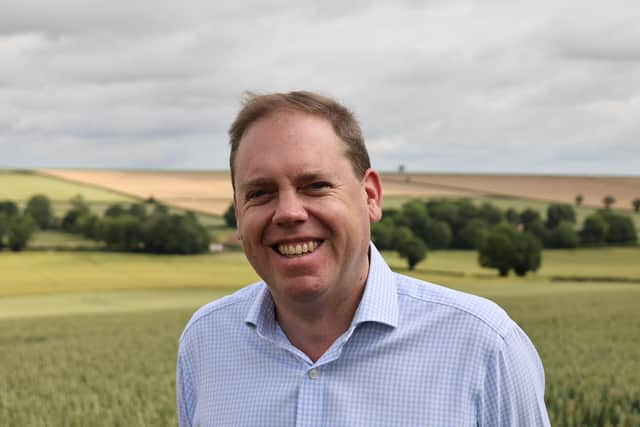Battleground Yorkshire: The region’s remaining Tories may have the keys to a future Conservative government
Three of these were on Humberside and four were in North Yorkshire, picking up no seats to the South and West of the region.
Dire opinion polls for the Conservativessuggest that the same will happen at the next election, with the Tories forced back into almost exactly the same seats it held on to in 1997.
Advertisement
Hide AdAdvertisement
Hide AdEast Yorkshire, now known as Bridlington and the Wolds, was one of those 7 and most projections have the seat narrowly remaining in Tory hands.


If the Conservatives are set for the worse end of the magnitude of loss that pollsters are predicting, the new MP could be one of less than 100 Tory MPs who will shape the party in opposition in the years to come.
“Obviously I don’t want to be in that situation, but if we do find ourselves there, it can be a very long way back,” says Charlie Dewhirst, the Conservative candidate for the seat.
“I think 1997 showed how long that can take to pull that back as we need to learn the mistakes of that period where the party turned in on itself, it was very inward-looking for some time.
Advertisement
Hide AdAdvertisement
Hide Ad“In 2001 we basically won one net gain, and that was a really poor showing and it took until 2005 to really start to get closer to government again.
“That shows that we need to be much much more engaged in why we’ve lost and what people want so that we adjust our policies accordingly so that we aren’t left in the wilderness for 10 to 15 years.”
Labour’s time languishing in opposition is a warning to would-be Tory MPs at this election, given the 2019’s disaster under Jeremy Corbyn.
The party’s fortunes also provide some hope for the Conservatives who win their seats at this election to be involved in a future Tory government.
Advertisement
Hide AdAdvertisement
Hide AdOver half of Labour’s current shadow cabinet won their seats after Labour had left office.
The most successful crop of MPs in the shadow cabinet are its 2015 intake, who have had to shape the party through the Corbyn years to its current form on the verge of an election victory.
Among them are Sir Keir Starmer, his deputy leader, and the incoming health and transport secretaries.
Mr Dewhirst, if he holds on to his seat later this year, may have a similar sway over his own party’s future.
Advertisement
Hide AdAdvertisement
Hide AdThe Tories’ path back to power also has a new route, through the devolved powers to mayors and combined authorities that successive Conservative governments have established.
By the end of the next term of Government, each part of Yorkshire will have a mayor, including North and East Yorkshire.
With an ever-greater disconnect between local services and central government funding, these mayoralties provide an opportunity for the Conservatives in opposition to win local power ahead of a national fightback.
This was achieved by Boris Johnson in 2008, and with Labour’s policy of establishing a mayor for almost every area of the country, the Tories will have any number of chances to replicate that across the UK.
Advertisement
Hide AdAdvertisement
Hide Ad“The platform that mayors have been given by the government allows them to be very successful in the local area,” says Mr Dewhirst.
“That will be important because they provide that voice of opposition and give you that sub figurehead to look to someone to be successful in administration in a slightly different role.
“It's gonna be really important, for the mayor, from my perspective, being up in the north of East Yorkshire to make sure that they are focused across the entire geography of our area because there is a danger when you've got a more urban and industrialised south, that naturally inward investment gravitates to that area.”
Comment Guidelines
National World encourages reader discussion on our stories. User feedback, insights and back-and-forth exchanges add a rich layer of context to reporting. Please review our Community Guidelines before commenting.